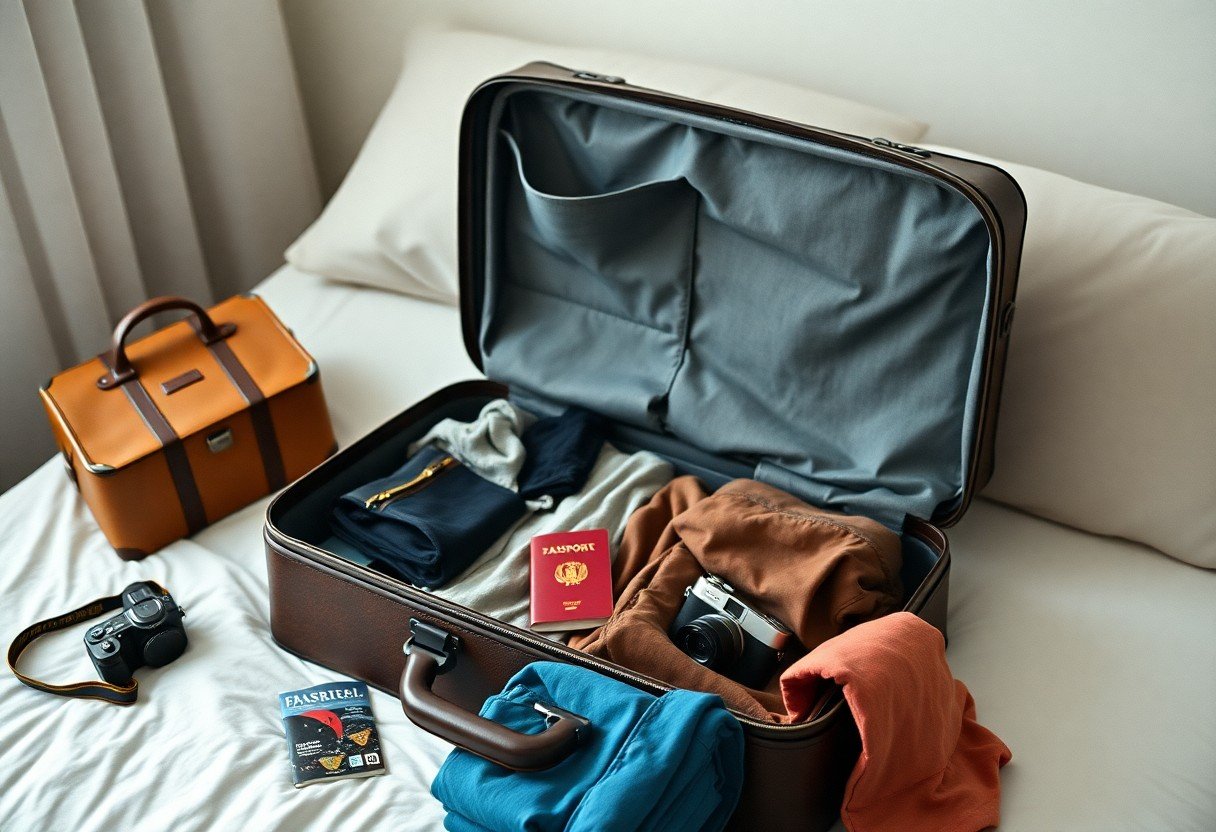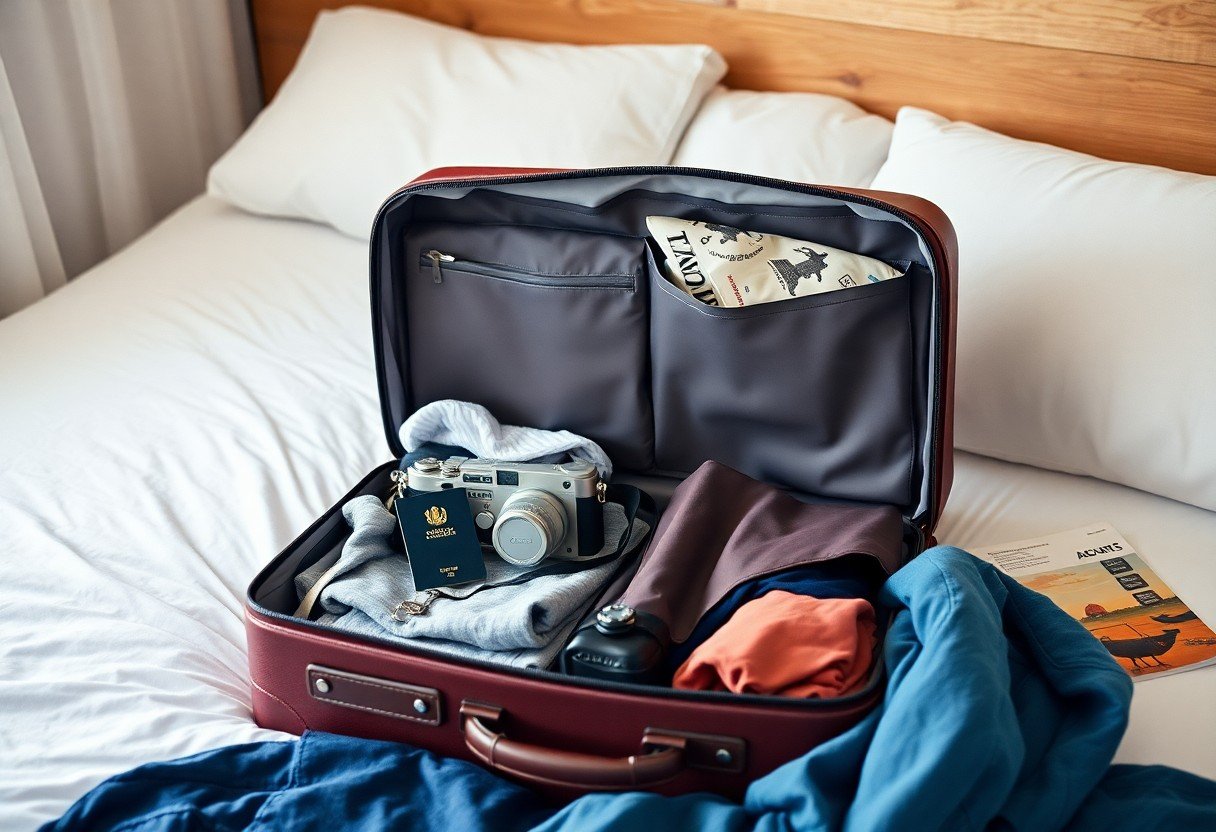Packing can make or break your travel experience. This ultimate guide is here to provide you with crucial packing tips that will help you streamline your travel process, avoid common pitfalls, and ensure you have everything you need, no matter your destination. Whether you’re a novice adventurer or a seasoned globetrotter, knowing what to pack, how to organize your luggage, and what to leave behind can transform your journey into a smooth, enjoyable adventure. Let’s dive in and get you prepared for your next trip!
Types of Packing
While packing for your travels, it’s vital to consider the different types of packing methods that suit your journey and lifestyle. The three main types include:
| Carry-On Packing | Packing light for short trips or budget airlines. |
| Checked Luggage Packing | For longer trips where you need more items. |
| Specialized Packing | Focus on specific gear for activities like sports or business. |
| Travel Style Consideration | Understanding your trip can influence packing choices. |
| Comfort and Convenience | Making sure items are accessible and easy to carry. |
This guide will help you choose the right packing method for your travel needs.
Carry-On Packing
One of the best strategies for hassle-free travel is to embrace carry-on packing. This approach allows you to travel with fewer items while ensuring you have vitals at hand. Prioritize your items, making sure to pack clothes that mix and match easily and include necessary toiletries in travel-sized containers to adhere to airline regulations.
Checked Luggage Packing
One efficient way to pack for longer trips is through checked luggage packing. This method allows you to carry more items, making it easier to bring along a variety of clothes and vitals. You can pack bulkier items or multiple pairs of shoes, as well as full-sized toiletries without limitations.
Packing for checked luggage provides you with the flexibility to expand your wardrobe and travel vitals. Use packing cubes for organization and to maximize space, ensuring items remain wrinkle-free. Don’t forget to include a change of clothes and crucial documents in your carry-on in case of luggage delays.
Specialized Packing (e.g., for sports, business)
Luggage with a specialized approach fits specific needs, whether for sports or business purposes. Tailor your packing list according to activities, making sure you have the right gear, appropriate clothing, and vital tools on hand.
Plus, when packing specialized items, consider their size and weight. Ensure your sports equipment is protected with proper cases or covers while opting for versatile clothing for business excursions. It’s all about balancing functionality with style to meet the demands of your specific journey.

Essential Tips for Efficient Packing
It’s important to adopt efficient packing habits to enhance your travel experience. Start by creating a comprehensive packing list to avoid last-minute stress. Roll your clothes instead of folding them to save space, and organize items in packing cubes for quick accessibility. Utilize every inch of your bag by using smaller items to fill gaps. Lastly, keep your necessarys easily accessible by placing them at the top of your bag or in a separate compartment. Knowing these techniques will ensure your packing experience is effective and hassle-free.
Packing Strategies
Some effective packing strategies can optimize your luggage space while keeping your belongings organized. Prioritize your packing by categorizing items such as clothing, toiletries, and electronics. Choose versatile clothing pieces that can be mixed and matched, reducing overall bulk. Also, consider packing outfits instead of individual items to streamline your travel wardrobe. A well-planned strategy can significantly reduce packing time and help you efficiently manage your belongings.
Must-Have Packing Tools
Packing tools can make your travel experience easier and more organized. Effective packing tools include packing cubes, compression bags, and travel-sized containers to ensure your items fit snugly in your luggage while complying with travel regulations. Additionally, a digital luggage scale can help you avoid excess weight charges, while a multi-purpose travel pouch can keep your necessarys organized.
To enhance your packing game, invest in high-quality tools designed for travelers. Packing cubes come in various sizes to maximize organization, while compression bags can significantly reduce the volume of garments. Consider travel-sized toiletry containers to comply with airport regulations and save space in your luggage. A portable luggage scale prevents unpleasant surprises at the check-in counter, while a compact first aid kit offers peace of mind against unexpected issues, making your trip smoother.
Time-Saving Techniques
An effective way to streamline your packing process is to implement time-saving techniques. Pack using a designated packing list that includes every necessary item, allowing you to save ample time. Set a timer for each packing stage to maintain focus and motivation, ensuring you complete each task efficiently. By packing well before your travel date, you can reduce the stress associated with last-minute packing.
Essential time-saving techniques include preparing a comprehensive checklist and packing well in advance. By organizing your belongings and laying out your necessarys ahead of time, you reduce the risk of forgetting crucial items. Choose lightweight travel gear to minimize your load and speed up your journey. Implementing these strategies not only makes for a quicker packing experience but also enhances your travel enjoyment, allowing you to focus on your adventures.

Step-by-Step Packing Process
Despite the packing pressure that often accompanies travel, having a system in place simplifies the task immensely. Follow our step-by-step process to ensure you cover all necessarys efficiently. Check out 11 Essential Travel Packing Tips for Frequent Travelers to gain some valuable insights. Here’s a simple table to guide you:
Essential Packing Steps
| Step 1 | Be clear on your destination and duration. |
| Step 2 | Create a packing list tailored to your activities. |
| Step 3 | Gather all items in one space for easier organization. |
| Step 4 | Pack strategically, placing heavier items at the bottom. |
Planning Before You Pack
The planning phase significantly impacts how smoothly your packing process will unfold. By mapping out your itinerary and activities, you’ll be able to select appropriate clothing and necessarys tailored for your trip. Having a clear plan means you avoid overpacking and ensure you’re ready for any situation.
Organizing Your Items
Before exploring into the packing process, take a moment to sort through your items. Categorizing your belongings by type—like clothing, toiletries, and electronics—makes it easier to find what you need as you pack.
Pack your items in compartments or packing cubes to minimize clutter and enhance accessibility. Additionally, consider rolling clothes to maximize space and prevent wrinkles. Utilize zip-lock bags for smaller items and liquids to keep everything tidy and contained. Your organized packing will save you time and effort during your travels.
Packing Techniques and Methods
An effective packing strategy can enhance your travel experience significantly. Different methods allow you to utilize space in your luggage efficiently and prevent damage to your items.
To optimize space, adopt techniques like bundle wrapping or the konmari method, where you fold and stack clothes to reduce wrinkles while maximizing space. You might also separate clothing by outfit, making it easier to grab what you need without rummaging through your bag. This thoughtful approach to packing leads to a more relaxed travel experience.
Factors to Consider When Packing
Your packing strategy should take into account various important factors to ensure a smooth travel experience. Consider the following:
- Duration of Travel
- Destination Climate
- Activities and Events Planned
The right approach to packing can make your journey more enjoyable and hassle-free.
Duration of Travel
Travel duration directly influences how you pack. For a weekend trip, you can get away with a smaller selection of versatile clothing, while longer trips may require a mix of casual and formal attire to suit different occasions.
Destination Climate
Even the most meticulously planned trip can go awry if you overlook climate. Research your destination’s weather forecast to pack appropriate clothing, whether it’s warm-weather gear or layers for colder conditions.
A well-thought-out packing list based on the local climate can help you avoid packing too much or too little. Consider items such as a rain jacket for wet climates or swimwear for beach destinations to ensure you remain comfortable throughout your trip.
Activities and Events Planned
Packing also depends on the activities and events you plan to engage in during your trip. Excursions, outdoor activities, or formal events may require specific gear or attire.
Understanding your itinerary allows you to pack efficiently without overloading your luggage. For instance, if you plan to hike, you’ll need appropriate footwear and exercise clothing. Conversely, formal dinners may necessitate specific outfits or accessories, ensuring you’re prepared for each experience during your travels.
Pros and Cons of Different Packing Methods
To make informed choices about your packing style, it’s necessary to weigh the advantages and disadvantages of various methods. Understanding the pros and cons can help you tailor your packing strategy to your unique travel needs. Check out The Ultimate Travel Gear Packing Guide for more insights.
| Pros | Cons |
|---|---|
| Efficient organization | Can be time-consuming |
| Reduces wrinkles | Space limitations |
| Easy access to items | Potential for overpacking |
| Prevents damage | Costs more for specialized gear |
| Customizable packing | May require extra luggage |
Minimalist Packing
One effective approach to packing is minimalism. By focusing only on necessarys, you can travel light and save time during your journey. This method encourages you to prioritize versatile clothing and multifunctional items, allowing for more freedom and flexibility on the road.
Maximizing Space and Weight
Some travelers seek to maximize their luggage space and minimize weight. This involves carefully selecting items that serve multiple purposes and utilizing smart packing strategies. Researching your destination’s climate can also help you choose the right clothing without overpacking.
Methods to maximize space may include rolling clothes, strategically placing heavier items at the bottom, and using every nook and cranny of your bag. This systematic approach ensures that your luggage remains manageable without sacrificing your travel necessarys.
Using Packing Cubes vs. Compression Bags
Different packing techniques can greatly affect your travel efficiency. Packing cubes promote organization, allowing you to categorize your items. In contrast, compression bags shrink bulkier clothing for optimal space usage, helping you fit more into your luggage.
Packing effectively involves weighing the benefits of packing cubes against compression bags. While cubes are great for easy access and organization, compression bags can significantly reduce the amount of space your items occupy. Consider your travel style and the duration of your trip when choosing the best method that serves your packing needs.
Frequently Asked Questions about Packing
Keep your travel stress-free by addressing common packing questions. From choosing the right luggage to maximizing your space, understanding packing imperatives can enhance your travel experience. Engage with the best practices while focusing on your personal preferences to tackle any challenges that arise.
How to Avoid Overpacking
Any traveler knows the temptation to pack “just in case” items can lead to overstuffed luggage. Focus on the imperatives by creating a detailed checklist, selecting versatile clothing, and sticking to a color palette. This approach not only saves space but ensures you have only what you truly need for a comfortable trip.
Tips for Packing Fragile Items
Clearly, protecting your delicate items is vital while traveling. To prevent damage, you should consider the following tips when packing fragile items:
- Use bubble wrap or clothing for cushioning
- Secure items with padding in your luggage
- Place fragile items in the center of your bag
Thou must prioritize the safety of your possessions with thoughtful packing techniques.
Utilizing bubble wrap and soft materials for cushioning can significantly reduce the risk of damage to fragile items. It’s imperative to pack these items tightly while organizing them in the center of your suitcase, surrounded by softer items for protection. Your attention to detail ensures they arrive at your destination intact.
Recommendations for Specific Travel Needs
Tips tailored to your specific needs can greatly enhance your travel packing process. Whether you’re traveling for business, leisure, or adventure, customizing your packing list to include items relevant to your unique situation will make a significant difference in your journey.
Packing for specific travel needs means adjusting your routine to ensure every requirement is met. If you’re a business traveler, ensure you have imperative documents and attire. Likewise, outdoor enthusiasts should pack durable gear, while families must include supplies for children. Each trip presents unique challenges, and staying prepared will keep the focus on enjoyment. Don’t overlook personal necessities that can make or break your trip.
Final Words
Now that you have explored ‘The Ultimate Guide To Packing – Travel Tips For Every Traveler’, you are equipped with the imperative strategies to make your packing experience more efficient and enjoyable. By following the tips and techniques outlined in this guide, you can maximize your luggage space while ensuring you have everything you need for your travels. From organizing your items to choosing the right luggage, these insights will empower you to travel smarter, allowing you to focus on making memories instead of worrying about what to bring.









